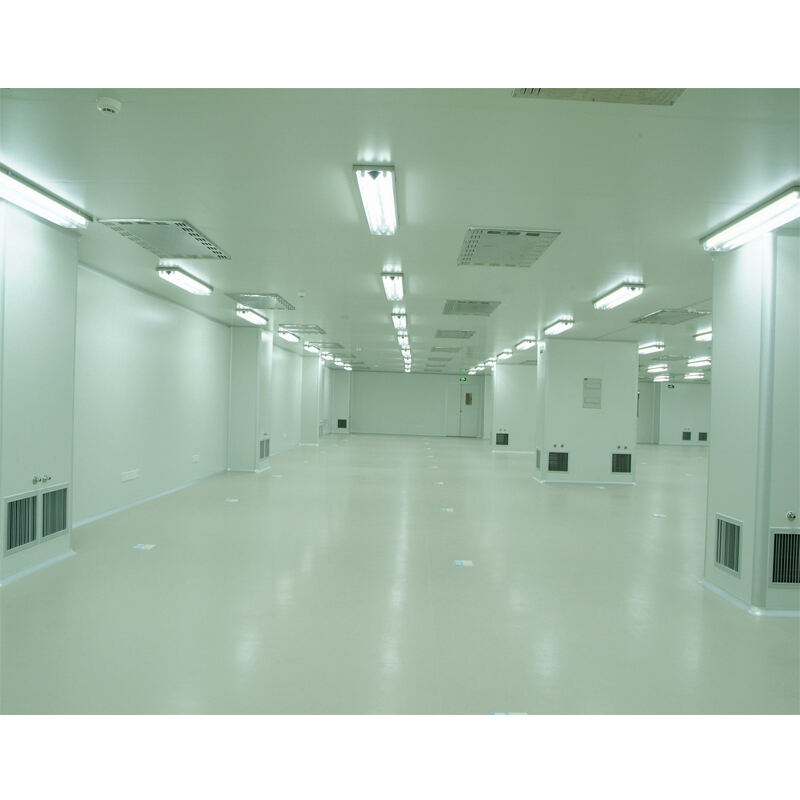Essential Guidelines for Clean Room Environmental Control
Maintaining clean room standards and air quality is a critical requirement across various industries, from pharmaceutical manufacturing to semiconductor production. These controlled environments demand rigorous protocols and monitoring systems to ensure optimal cleanliness levels and prevent contamination. Understanding and implementing proper clean room maintenance procedures is essential for regulatory compliance and product quality assurance.
Modern clean room facilities represent significant investments in technology and infrastructure, designed to maintain specific particulate levels and environmental conditions. The success of many manufacturing processes hinges on the ability to consistently meet these exacting standards. Let's explore the comprehensive approaches and best practices that ensure clean room integrity.
Fundamental Components of Clean Room Management
Air Filtration and Handling Systems
The backbone of any clean room facility lies in its sophisticated air filtration system. High-efficiency particulate air (HEPA) filters and ultra-low particulate air (ULPA) filters serve as the primary defense against airborne contamination. These advanced filtration systems must operate continuously to maintain the required air quality levels.
Regular maintenance and monitoring of air handling units ensure optimal performance. This includes scheduled filter replacements, pressure differential checks, and airflow pattern verification. The filtration system should provide the appropriate number of air changes per hour as specified by the clean room classification.
Environmental Parameter Control
Temperature, humidity, and pressure differentials must be precisely controlled to maintain clean room standards. Environmental monitoring systems provide real-time data on these critical parameters. Proper calibration and regular verification of monitoring equipment ensure accurate readings and timely response to any deviations.
Maintaining positive pressure differentials between adjacent spaces prevents the infiltration of contaminants from less clean areas. The cascade of pressures from the cleanest to less clean areas creates a protective barrier against particulate intrusion.
Personnel Training and Compliance Protocols
Gowning Procedures and Hygiene Standards
Staff training in proper gowning techniques is fundamental to maintaining clean room standards. The gowning process must follow a specific sequence and include appropriate protective equipment based on the clean room classification. Regular audits of gowning procedures ensure consistent compliance.
Personal hygiene protocols extend beyond basic cleanliness to include restrictions on cosmetics, jewelry, and personal items. Training programs should emphasize the impact of human activity on particulate generation and the importance of minimizing unnecessary movements within the clean room.
Behavioral Guidelines and Standard Operating Procedures
Establishing clear behavioral guidelines helps maintain consistent clean room practices. This includes proper entry and exit procedures, movement patterns within the clean room, and material transfer protocols. Documentation of standard operating procedures provides references for staff and ensures uniformity in operations.
Regular refresher training sessions keep personnel updated on current best practices and reinforce the importance of procedural compliance. Performance monitoring and feedback systems help identify areas for improvement in personnel practices.
Cleaning and Contamination Control
Surface Cleaning Protocols
Implementing systematic cleaning procedures is crucial for maintaining clean room standards. This includes selecting appropriate cleaning agents, using proper cleaning techniques, and following specified cleaning frequencies. All cleaning materials must be clean room compatible and generate minimal particles.
Documentation of cleaning activities, including cleaning logs and verification procedures, ensures accountability and traceability. Regular surface sampling helps verify the effectiveness of cleaning protocols and identifies any potential contamination issues.
Material Transfer and Storage Practices
Proper material transfer procedures prevent the introduction of contaminants into the clean room environment. This includes appropriate cleaning and packaging of materials before entry, using pass-through chambers, and following specific transfer protocols.
Storage within the clean room requires dedicated areas and organized systems to minimize particle generation and cross-contamination risks. Regular inventory management ensures that only necessary items are kept in the clean room.
Monitoring and Documentation Systems
Particle Monitoring Programs
Implementing comprehensive particle monitoring programs provides crucial data on clean room performance. This includes both continuous and periodic monitoring of airborne particles, with appropriate alert and action limits established for different clean room classifications.
Regular calibration of monitoring equipment and proper data analysis ensure reliable results. Trend analysis helps identify potential issues before they become significant problems and supports continuous improvement initiatives.
Documentation and Record Keeping
Maintaining detailed records of all clean room operations is essential for regulatory compliance and quality assurance. This includes environmental monitoring data, cleaning records, maintenance logs, and personnel training documentation.
Electronic monitoring systems can streamline data collection and analysis, providing real-time alerts and automated reporting capabilities. Regular review of documentation helps identify trends and supports decision-making for operational improvements.
Frequently Asked Questions
What factors most significantly impact clean room air quality?
The most significant factors affecting clean room air quality include HVAC system performance, personnel practices, cleaning procedures, and material transfer protocols. Regular monitoring and maintenance of these elements are essential for maintaining required cleanliness levels.
How often should clean room certification be performed?
Clean room certification should typically be performed at least annually, with some facilities requiring more frequent certification based on regulatory requirements or specific process needs. Regular monitoring between certifications helps ensure continued compliance with clean room standards.
What are the most common causes of clean room contamination?
Common sources of contamination include improper gowning procedures, inadequate cleaning protocols, failed HVAC components, and breaches in material transfer procedures. Regular training, maintenance, and monitoring help prevent these contamination sources.

